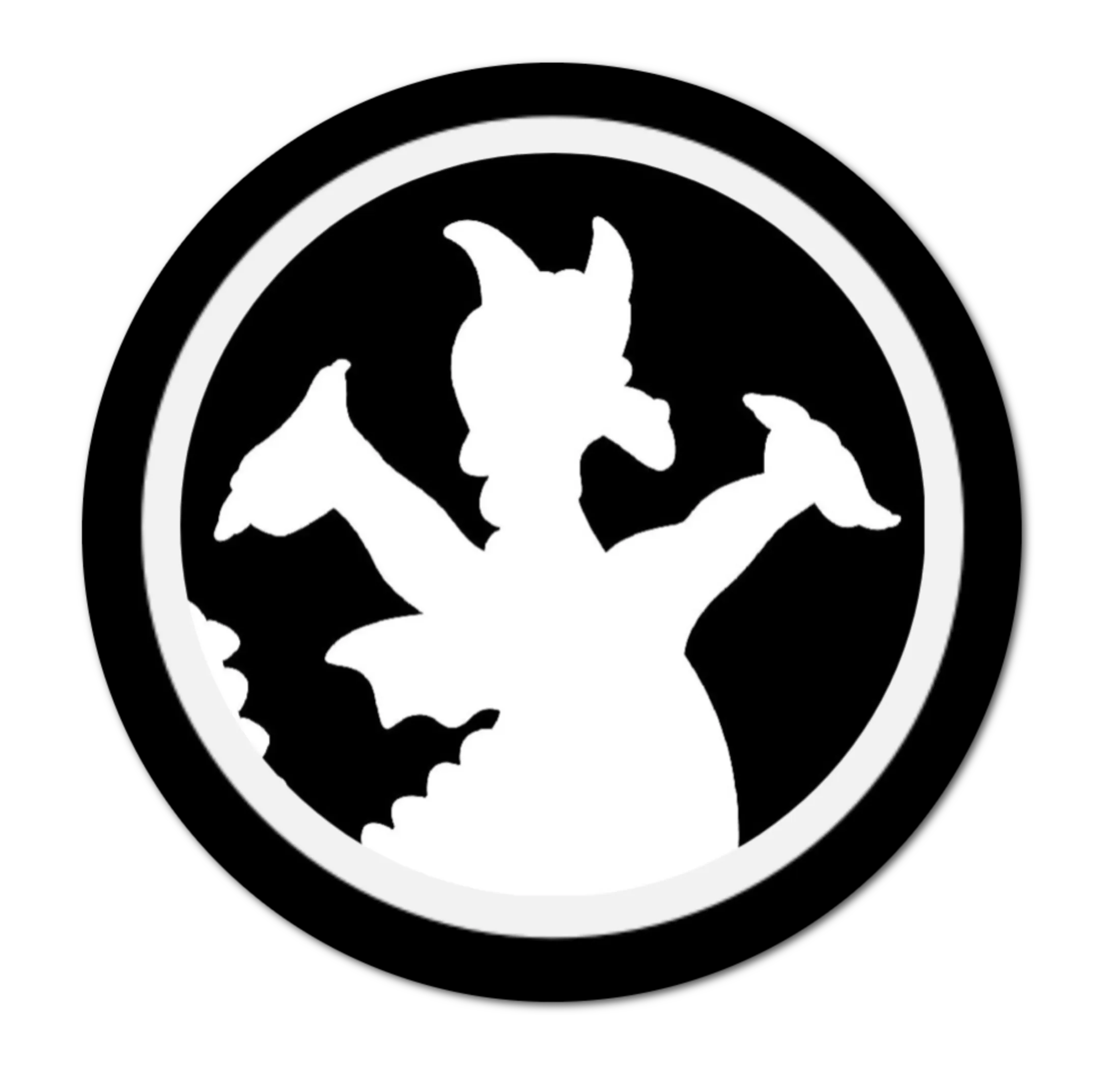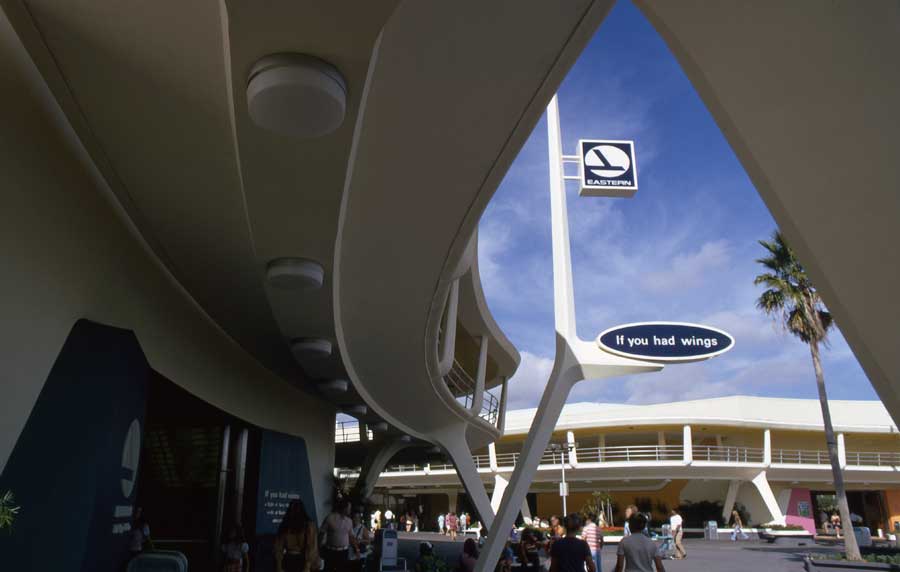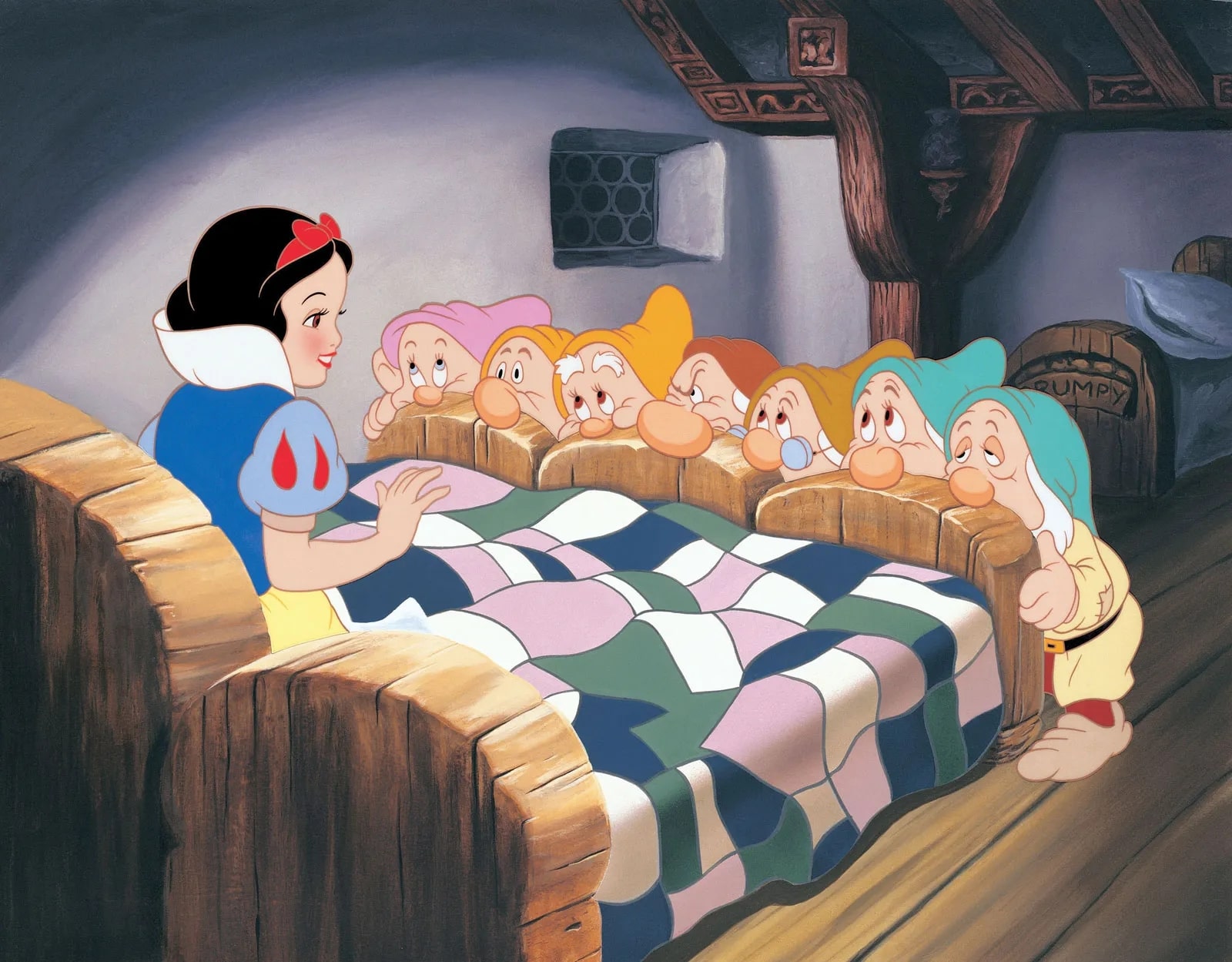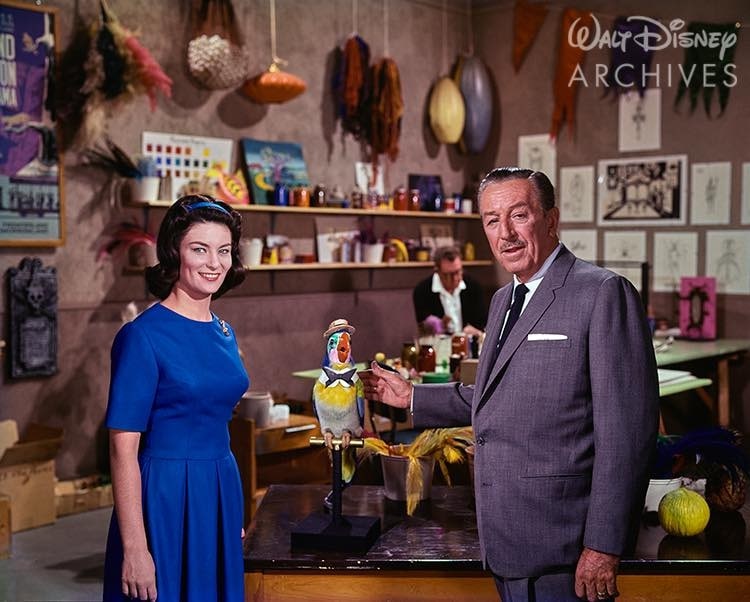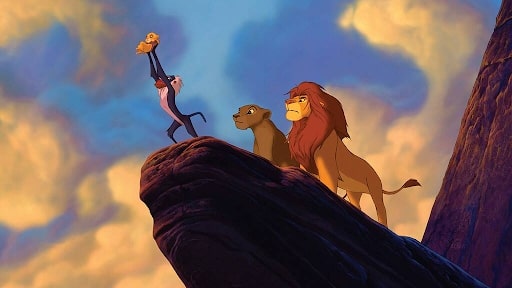The American public has long had a fascination with the friendly skies. From the early days of the Wright Brothers through the supersonic age of highways in the sky, people have had a romantic relationship with air travel. Come fly with us today as we visit two of Tomorrowland’s celebrations in flight.
In today’s installment of Dearly Departed Disney, let’s board a flight reminiscent of the early echoes of Epcot, as we journey the skies of the world via Tomorrowland’s travel partners of old.
If You Had Wings
In the infancy days of Magic Kingdom’s Tomorrowland, taking flight was the order of the day. Since opening day in October 1971, guests were able to visit the moon. Beginning on June 5, 1972 (about eight months after Magic Kingdom first opened) guests were now able to take a flight around the globe.
A High Flying Sponsorship
Eastern Airlines dominated the skies of the United States eastern seaboard from the 1930s into the late 1970s. The airline was headquartered in Miami, and became the first official airline of Walt Disney World. In fact, during the early years of WDW operation, the short-lived WDW STOLport (an acronym for a small airport specializing in “Short Take-Off and Landing” procedures) ran shuttle flights in conjunction with Eastern Airlines flights that flew into major airports in central Florida.
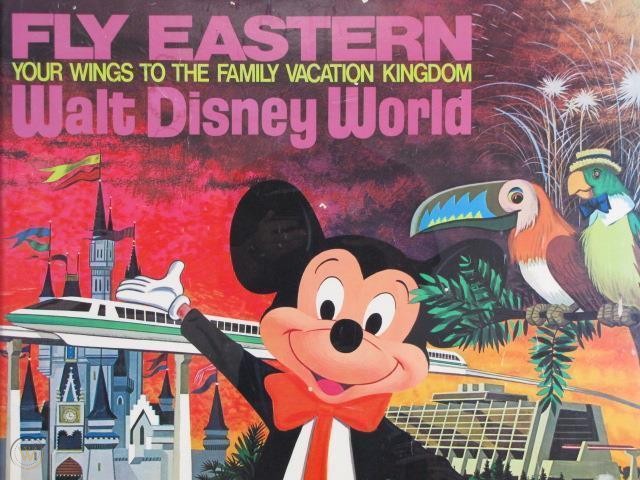
With their official flight partner status firmly in place at WDW, Eastern happily invested approximately $10 million to sponsor If You Had Wings. In doing so, Eastern was able to present guests with a peek at many of their premier flight destinations around the world.
“A Flight of Fancy Through the World of Eastern Airlines”
The attraction itself was similar in composition to the Disneyland attraction Adventure Thru Inner Space, which was the first attraction to use Disney’s Omnimover system. If You Had Wings was the second Magic Kingdom attraction to use the Omnimover, with the first being Haunted Mansion. The attraction, along with Adventure Thru Inner Space, was designed by Claude Coats.
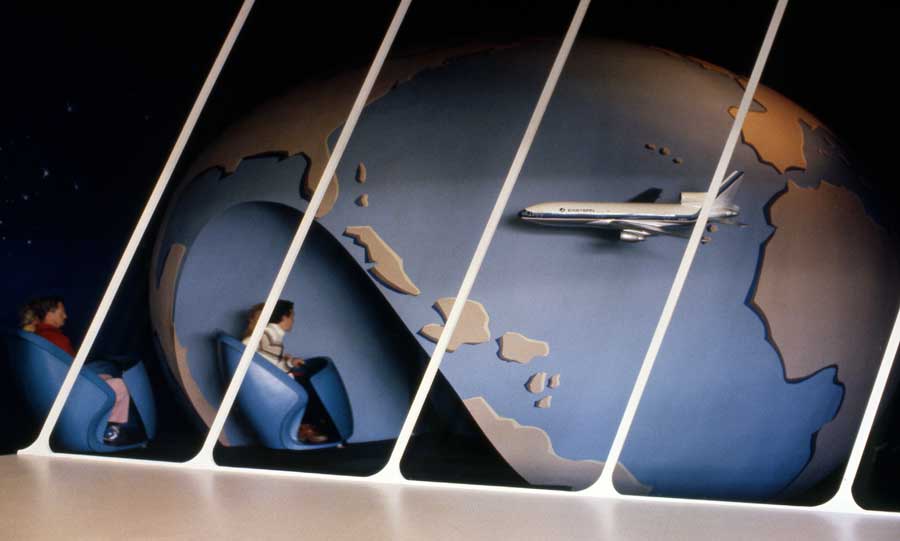
The omnipresent theme song was written by Buddy Baker, with lyrics provided by Xavier “X” Atencio. The music featured a chorus of singers tunefully chanting the earworm,
“If you had wings, if you had wings
If you had wings, had wings, had wings, had wings”
Visually speaking, If You Had Wings was very different from most historical Disney dark rides, in that it used 85 film projectors instead of solid sets, with projections accounting for almost the entire visual experience. As guests slowly crept along in their ride vehicles, they were offered glimpses of celebratory scenes in Mexico, Bermuda, Puerto Rico, the Bahamas, Jamaica, Trinidad, and New Orleans. It comes as no surprise that Eastern Airlines provided flight service to all of these destinations at the time.
The Speed Room
After touring a few of Eastern’s destinations, guests traveled through the “speed room.” This was a large ellipsoid-shaped room within which guests would view first-person films of fast-paced movement sequences. These scenes included an airplane taking off, a train barreling along the tracks, water skiers, motorcycles, and airboats, among others. All of these scenes were projected on the tall walls of the ellipsoid by a 70mm projector. To add to the effect, all ride vehicles reclined and a breeze was blown upon the guests, creating an illusion of fast flight. You might call this an early version of virtual reality.
Trivia Tidbit – The effects used in the speed room adapted technology first employed in Disneyland’s PeopleMover in 1977 for its “SuperSpeed Tunnel.”
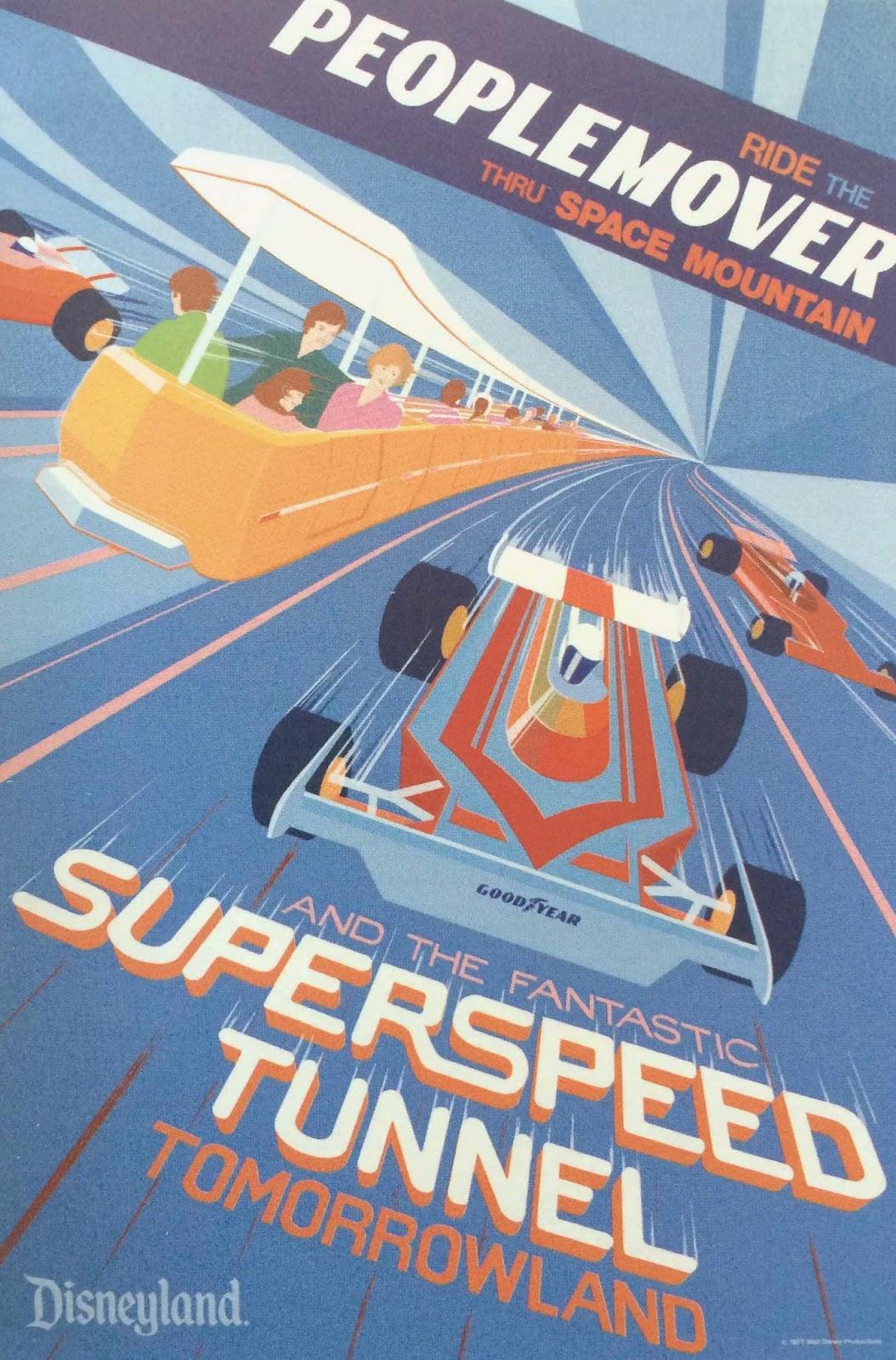
The Mirror Room
After leaving the speed room, guests entered the “mirror room.” Here, two additional 70mm projectors produced images of snow-covered mountains appearing on large screens, which were reflected even larger through room-sized, floor-to-ceiling mirrors. The music took center stage in this room, as the lyrics took a backseat.

Following the mirror room, guests “descended” towards the ride’s end, while the voice of Orson Welles assured riders:
You do have wings.
You can do all these things.
You can widen your world.
Eastern: the wings of man.
Now all good Disney attractions end with a walk through the souvenir shop. But after the conclusion of If You Had Wings, guests entered something more like a travel agency. An Eastern Airlines reservation desk – complete with agents – awaited guests who felt inspired by the 70 mm journey they just took. Travel arrangements could be booked on-site!
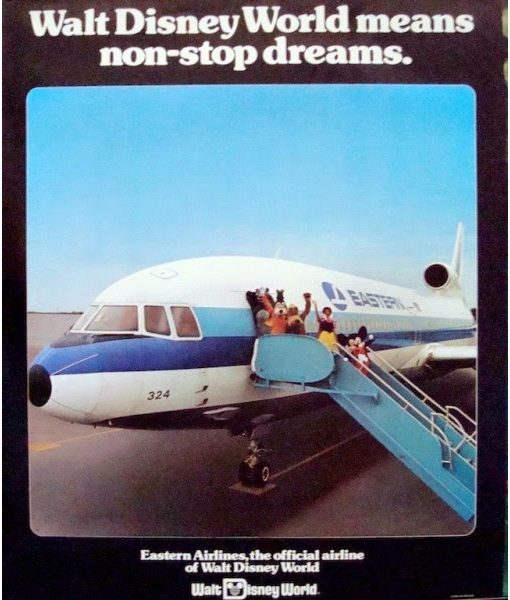
Eastern’s Final Flight
Due to various financial difficulties, Eastern withdrew its sponsorship of the attraction in 1987. The attraction closed on June 1 of that year, and reopened five days later, on June 6, as If You Could Fly. The attraction’s theme music was replaced, and the opening scene, which originally showed a film about Eastern Airlines, was replaced with footage of flying birds. If You Could Fly operated without a sponsor until it closed permanently on January 3, 1989.
Eastern’s termination of sponsorship proved to be a harbinger of things to come, as the airline filed for bankruptcy and went out of business four years later, in January 1991.
Passing the Torch
Eastern Airlines may have vacated Walt Disney World, but Delta Airlines stepped in to take on sponsorship of the attraction. After almost six months of planning and refurbishment, guests at Magic Kingdom were once again invited to fly the Florida skies. Delta Dreamflight opened on June 23, 1989.
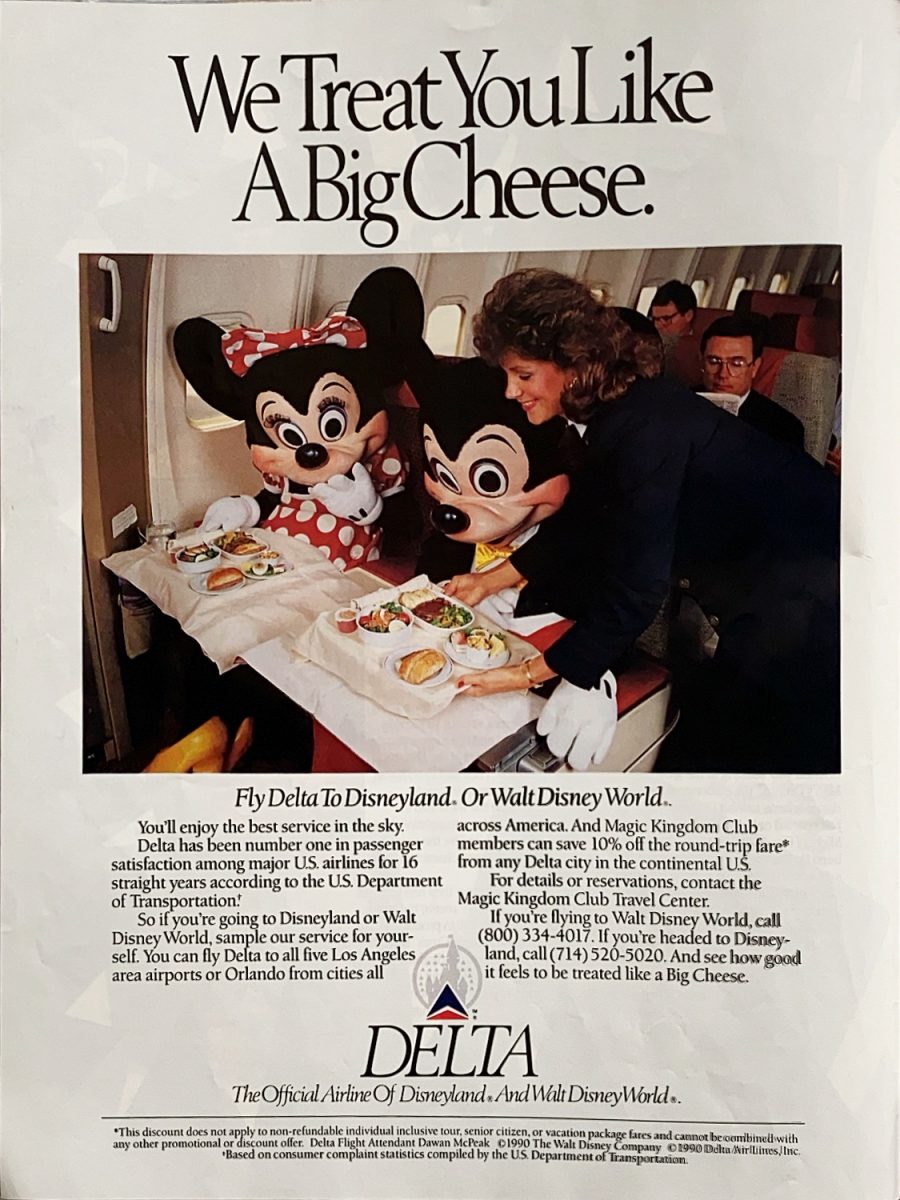
Delta Dreamflight
This spiritual successor to If You Had Wings used the same ride track and Omnimover vehicles as the previous ride, but the story focused on the history of aviation, rather than a simple trip to a handful of exotic locations.
Guests entered the building and into a small queue designed to look like an airport terminal. At the end of the queue, guests entered the attraction through the door of an actual Delta 767 airplane front end, giving the appearance of actually boarding an airplane. The plane was marked “The Spirit of Delta” in bright gold lettering.
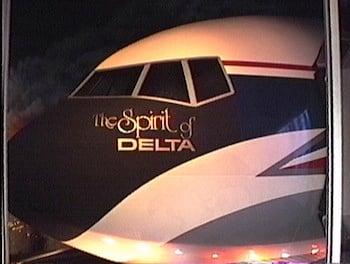
A Brief History of Flight
This portion of Delta Dreamflight elicits a strong correlation with the progress-themed 1980s attractions of Epcot’s Future World. A tour through three eras of flight in America evoke strong memories of World of Motion’s travel tales, and Spaceship Earth’s history of communication.
Golden Age
The first era of flight guests encountered was America’s golden age of aviation. After viewing a giant mural depicting some of the earliest airplanes, guests entered a room containing a giant, pop-up book style spinning room displaying hot air balloons and other flying contraptions, as the catchy swing-style Dreamflight Song by Edo Guidotti played happily. The next room in the golden age showed guests several biplanes performing stunts over a field in the American midwest. Biplanes, stunt planes and barnstormers were flying all over the ceiling above a flying circus air show. One humorous moment showed a plane which had crashed through a barn, with the pilot stuck in the rafters on the ceiling of the barn. The third room took guests on a filmed flight with an aerial stuntman standing on top of a prop plane while it performed dizzying stunts in the air.
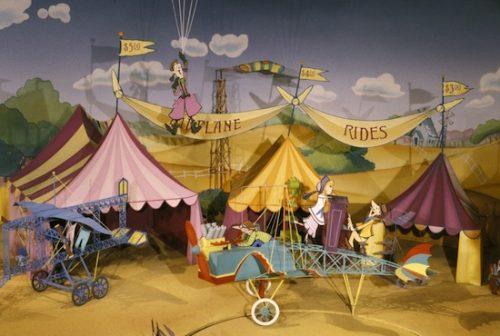
Era of Air Travel
In the era of air travel, guests heard a flight announcement by the pilot preparing them for the places they would visit. When guests entered the fuselage of a Boeing 314 Flying Boat, they caught a glimpse of mid-century first-class air dining. Guests then made brief stops in Tokyo, Paris, and San Francisco. The final portion of this second act prepared guests for a trip to the “Jet Age.” As heard from the flight attendant, “Ladies and Gentlemen, your Dreamflight will depart immediately for the future. Please prepare for supersonic takeoff.”
Traveling to the Future
The striking introduction to act three gave guests the impression they were creeping toward the inside of a turbo jet engine – quite literally entering the Jet Age. The sounds of an engine roared to life, and guests enjoyed a projection of a simulated flight takeoff. Once through the clouds, guests viewed simulations of flying through a canyon, and ultimately through a futuristic city.
The attraction concluded with a giant pop-up book with destinations spread out on huge pages. The book’s pages would turn to show off different destinations, while a projection of a little Delta jet flew by above the display into the clouds.
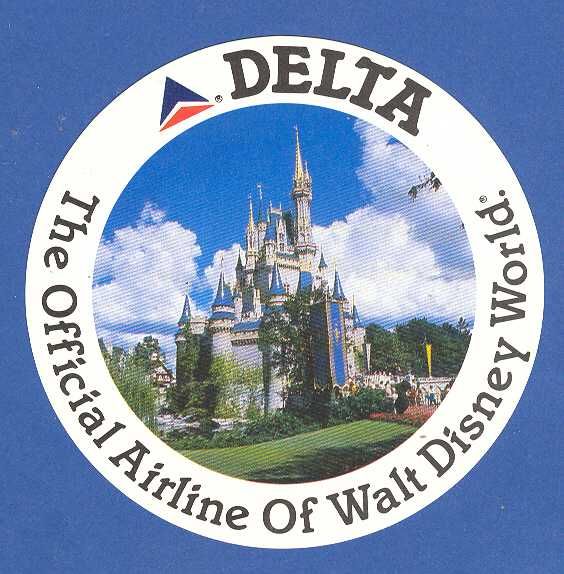
Another Sponsorship Ends
Amid mounting costs associated with sponsoring the 1996 Olympics in Atlanta, Georgia, Delta made a decision to terminate sponsorship of the attraction at the end of 1995. Following the termination of Delta’s sponsorship, the attraction was temporarily renamed Dreamflight until June 4, 1996. From June 5, 1996 through its closure on January 5, 1998, the attraction was titled Take Flight. To fit in with the New Tomorrowland theme, the attraction was “sponsored” by the “Tomorrowland Metro-Retro Society.”
Heading to Space
Following the attraction’s January 1998 closure, a lengthy refurbishment produced Buzz Lightyear’s Space Ranger Spin, which opened on November 3, 1998. Buzz valiantly defends the universe against Evil Emperor Zurg to this day. The ride system remains almost exactly the same as that of its predecessors, even down to the speed tunnel room, which now functions as an alien asteroid field.
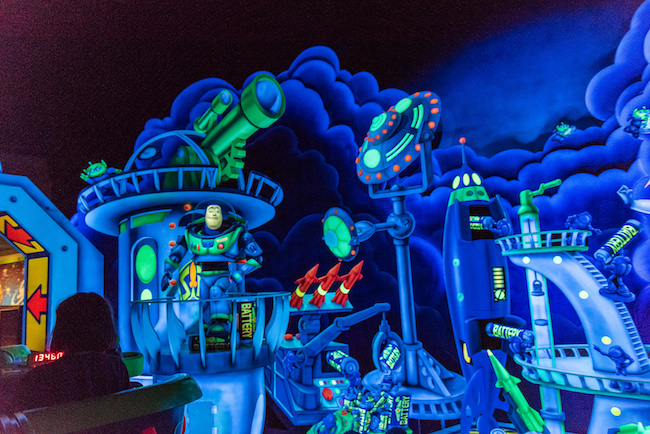
Nods to the Past
While Buzz Lightyear’s Space Ranger Spin shares very little in common with the previous attractions, Imagineers did place one clever nod into the attraction’s Volcano Room. Sharp-eyed shooters may notice several chicken cutouts laying low near the ride vehicle’s path. These chickens are an homage to those “Golden Age” chickens who scattered about in the barnstormer story scene from Delta Dreamflight.
While not a specific nod to WDW’s former flight partners, the signage above the entrance to Buzz kept the same shape and construction as Delta Dreamflight. Also, the weenie-type sign protruding from the TTA PeopleMover track harkens back to the sign for If You Had Wings.
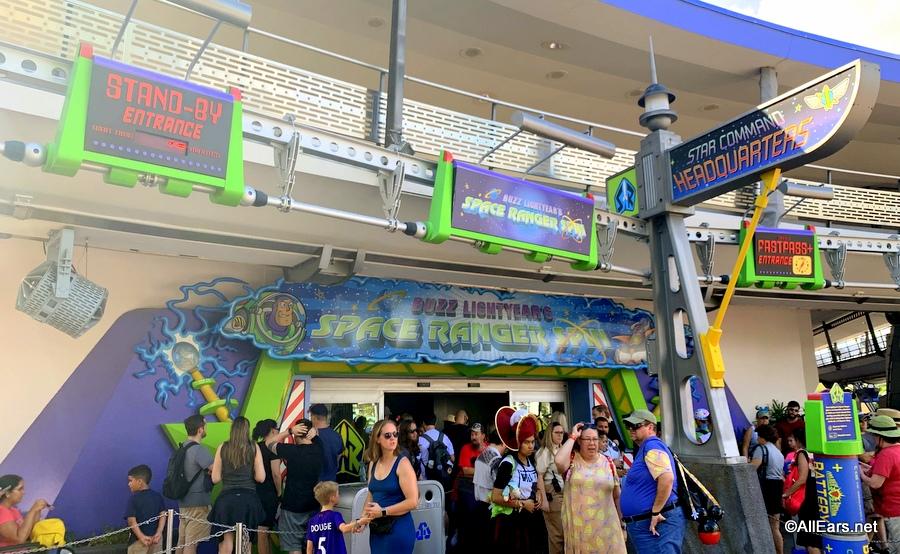
Tomorrowland In Yesteryear
Thanks for joining us on another trip through Tomorrowland’s past. It does feel ironic to note how many future-oriented attractions have wound up stranded in the past. But as Walt Disney himself once said “Disneyland will never be completed. It will continue to grow as long as there is imagination left in the world.” Tomorrowland, more than any other of Disney’s themed lands, will always be presented with the challenge of evolution and reimagining. Let’s join Walt’s vision and look toward the future, while also appreciating the past.

Thanks for riding, and please follow along here for additional articles in this series. We’ll continue to explore many other former attractions and experiences from Walt Disney World, including Magic Kingdom, Epcot, Hollywood Studios, and Animal Kingdom.
Sources referenced in writing this article include:
Walt Dated World (with articles on both attractions)
If you enjoyed this article, please feel free to share it with friends.
